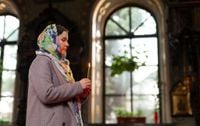On May 4, 2025, Orthodox Christians worldwide will celebrate the Day of Women-Myrrhbearers, a holiday that honors the faithful women who were the first to witness the resurrection of Jesus Christ. This date, which falls on the second Sunday after Easter, is considered an Orthodox women's day, dedicated to recognizing the courage and devotion of these women who played a pivotal role in the early Christian narrative.
The holiday has its roots in the biblical account of the women who visited Jesus' tomb to anoint his body with myrrh after his crucifixion. According to tradition, they arrived at the cave only to find that the large stone sealing the entrance had been rolled away. An angel appeared to them, proclaiming, "He is not here; He has risen!" This revelation led the women-myrrhbearers, including Mary Magdalene, to become the first heralds of the resurrection, rushing back to share the good news with the apostles.
In 2025, the Day of Women-Myrrhbearers will be observed on May 4, a date that varies each year depending on the timing of Easter, which was celebrated on April 20 this year. The holiday serves as a reminder of the strength and faith of these women who, despite the risks of persecution, demonstrated unwavering loyalty to Christ.
Traditionally, the Day of Women-Myrrhbearers is marked by special church services in honor of these holy figures. During these services, parishioners pray for the health, happiness, and well-being of the women in their lives—mothers, sisters, grandmothers, and wives. It is a time for reflection on the virtues of fidelity, love, and selfless service that these women exemplified.
In addition to religious observances, the day is also celebrated culturally among Orthodox communities. It bears similarities to International Women's Day, celebrated on March 8, but is imbued with a profound spiritual significance. Many people take the opportunity to honor the women in their lives by giving flowers, sharing kind words, and expressing gratitude for their contributions to family and community.
The Day of Women-Myrrhbearers is also steeped in various folk traditions and customs. Historically, this day was known in Russia as "Babya Nedelya," or "Women’s Week," during which women would gather to celebrate without the presence of men. They would wear new clothes, prepare festive meals, and engage in communal activities, fostering a spirit of unity and cooperation.
One popular dish associated with this holiday is a large omelet, symbolizing life and fertility. It is customary for women to prepare this dish together, signifying their bond and shared experiences. The act of cooking and celebrating together reinforces the importance of female companionship and support.
Moreover, the day is rich with folk beliefs and superstitions. For example, it is said that if the weather is clear and sunny on the Day of Women-Myrrhbearers, prosperity and peace will reign in the home. Conversely, rain on this day is interpreted as a sign of impending joyful events for women. Additionally, washing one’s face with rainwater is believed to preserve beauty and youth, while the birth of a girl on this day is seen as a blessing, indicating that she will bring love and kindness to her family.
However, there are also strict prohibitions associated with the celebration. It is considered bad luck to argue or quarrel on this day, especially with women, as it is believed to invite misfortune for the entire year. Offending women or refusing requests for help is also frowned upon, as these actions can block the flow of good fortune. The focus of the day is on positivity and gratitude, aligning with the spirit of the holiday.
As the Day of Women-Myrrhbearers approaches, many communities will engage in various rituals to honor the women in their lives. The tradition of choosing a godmother for children is also observed on this day, further emphasizing the role of women as nurturers and caregivers.
In summary, the Day of Women-Myrrhbearers is a significant occasion for Orthodox Christians, blending religious observance with cultural celebrations. It serves as a powerful reminder of the contributions of women to faith and family, encouraging communities to come together in gratitude and respect. As the holiday draws near, it invites reflection on the enduring legacy of the women-myrrhbearers and their vital role in the story of Christianity.






